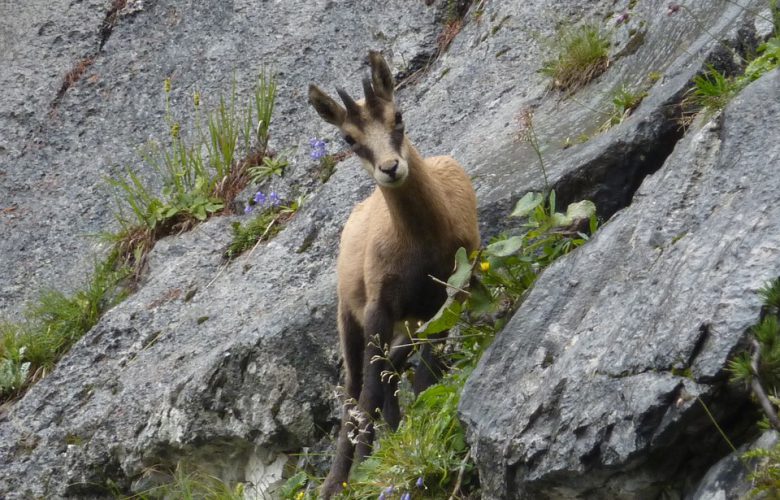Sharing a press release from the German Wildlife Foundation (Deutsche Wildtier Stiftung) on a new study entitled ‘The Chamois in Europe’
What does the future of the Alpine chamois look like? A study shows that there are considerable differences in the monitoring and management of the Alpine chamois between the individual countries of the Alpine region. Conclusion: in Bavaria, the chamois populations are hunted far too intensively. This means that their conservation status in Germany is not favourable and the future prospects are bleak.
Disarray in the protection of the Alpine chamois revealed by new study: Failures in Austria and Germany
Hamburg, 18 May 2020.
Unfortunately, going alone at a national level is an everyday occurrence in the EU – and the COVID-19 crisis is not the first occasion. This also applies to the handling of wild animals that are under special EU protection. A good example of this is the Alpine chamois. It is under the special protection of the EU’s Fauna-Flora-Habitat Directive and is also listed in the Bern Convention.
“The EU countries bordering the Alps are therefore obliged to regularly survey and assess the condition of their chamois populations”, emphasised Hilmar Freiherr von Münchhausen, Managing Director of the German Wildlife Foundation. He added: “Chamois may only be hunted when the conservation status of the populations is favourable”. A joint study by the German Wildlife Foundation and the International Council for Game and Wildlife Conservation (CIC) has now shown that there are considerable differences between the individual states of the Alpine region in the monitoring and management of their common conservation asset, the Alpine chamois. “While France, Italy and Slovenia estimate the conservation status of the chamois through elaborate monitoring of the living chamois population, Germany and Austria simply report the number of harvested animals to the EU,” Münchhausen criticised.
“Data and analyses on the age and social structure of the chamois population is completely disregarded, although it is precisely this information that characterises professional hunting utilization”. The differences become even clearer when planning hunting interventions: In almost all EU countries, the hunting quota is determined taking into account biological data such as natural winter mortality; in Bavaria, the harvest quota is only derived from the condition of the forest vegetation. “The inadequate implementation of the EU requirements culminates in Bavaria, in the designation of areas where the chamois no longer has a closed season”, stated Münchhausen. Studies by the German Wildlife Foundation indicate that the chamois populations in Bavaria are hunted far too intensively. This means that their conservation status in Germany is not favourable and the future prospects are bleak. The German Wildlife Foundation and the CIC are therefore calling for comprehensive monitoring of chamois in Bavaria, no local extension of hunting seasons and the designation of areas with closed season, so that the populations can recover regionally.
The study can be downloaded in German here: studie2020-die-gams-in-europa

